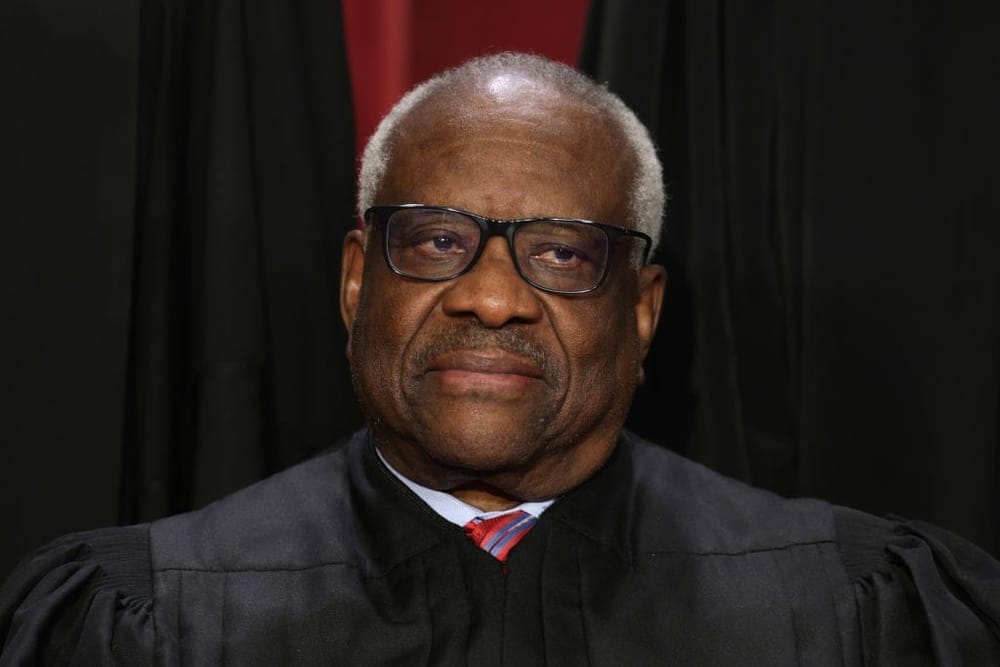Civil rights established by previous generations are on shaky ground as Supreme Court Justice Clarence Thomas openly shared his disapproval of Brown v. Board of Education. In a 1954 unanimous decision, justices declared segregated schools unconstitutional, setting a powerful precedent that challenged the racial hierarchy after nearly a century of "separate but equal" under Plessy v. Ferguson. However, as a court decision rather than legislation, Brown v. Board of Education relies on the court's interpretation, leaving its future uncertain.
The recent overturning of Roe v. Wade, which stripped women of reproductive rights, raises concerns about the potential of dismantling other civil rights precedents. If nearly fifty years of so-called settled law can be rescinded, what does this mean for the security of Brown v. Board of Education? Two years ago, I wrote an article in Oprah Daily suggesting that the Roe v. Wade reversal could set back school desegregation. After the Supreme Court dismissed protections for women's reproductive rights, Senator John Cornyn's statement, "Now do Plessy vs. Ferguson/Bron vs. Board of Education," signaled his desire to see these decisions rescinded as well. A country where women and Black people have fewer rights should concern all citizens, yet some eagerly await the systematic rollback of civil liberties. We must view these rights as vulnerable because they stand on shifting tectonic plates.
Acknowledging the vulnerability of civil rights precedents is the first step in protecting them. Citizens must remain vigilant and engaged, actively advocating for preserving landmark decisions like Brown v. Board of Education to progress toward an equitable society. If the Constitution is not robust or sturdy enough to protect citizens' rights, it must be expanded. This raises the question many have asked after learning of Thomas's opinion: Why is Brown v. Board of Education on thin ice?
We must remember that the Jim Crow system of racial apartheid ended not because the average white American experienced a shift in conscience but because of the opinions held by those on the Supreme Court. Enforcing Brown v. Board of Education required President Dwight Eisenhower to send federal troops to Little Rock, Arkansas, to ensure white politicians, parents, students, faculty, and staff would accept Black students in formerly whites-only public schools. It is also noteworthy that de-facto segregation persists in America despite Brown v. Board of Education, as white parents resisted integration policies.
Of course, it's noteworthy that a Black man is throwing stones at the precedent set by Brown v. Board of Education. Justice Clarence Thomas' actions illustrate how token representation is weaponized. While most Black Americans support the advancement of civil rights, highlighting the views of someone in the minority can weaken the community's overall goals. As a 75-year-old Black man, Justice Thomas is undoubtedly aware of the severe underfunding and discrimination that Black students faced before the 1954 ruling. Then, Black children languished in severely underfunded, dilapidated schools. Despite their academic abilities, they were denied access to colleges and universities solely due to the color of their skin.
Eliminating these protections would only serve to exacerbate the racial disparities for Black students. Nevertheless, conservatives have long criticized Brown v. Board of Education as judicial overreach in its interpretation, and Justice Thomas made similar remarks in a 1995 concurring opinion. He claimed that justices used "extraordinary remedial measures" to address racial segregation in public schools, ironically ignoring that such protections were necessitated by systemic racism in American society.
In Brown v. Board of Education, justices recognized that "segregation of white and colored children in public schools has a detrimental effect upon the colored children." Furthermore, their unanimous decision asserted that segregation "deprived [them] of equal protection of the laws generated by the Fourteenth Amendment." Reconstruction legislation designed to ensure equal legal protection became the foundation for dismantling the racial apartheid system. For Justice Thomas to suggest the Brown v. Board of Education went too far is concerning because it indicates an unwillingness to acknowledge the 14th Amendment, which has justified the development of civil rights legislation, such as The Civil Rights Act of 1964, the Voting Rights Act of 1965, and the Voting Rights Act of 1968.
In 2015, Amber Philips wrote an article in The Washington Post warning that Republicans wanted to change the 14th Amendment, which often "requires war, crises or death." Changing the Constitution is not easy, but some conservatives have seriously considered doing so. For example, in 2018, President Trump threatened to abolish the 14th Amendment by executive order. Legal scholars quickly dispelled the confusion surrounding the limits of his authority, as Trump did not have the power to change the Constitution by executive order. The process requires support from the majority of the House of Representatives and the Senate, followed by a presidential signature. Although the method Trump proposed was implausible, his opposition to the 14th Amendment signaled growing political support among conservatives to abolish it. Failing to respect Reconstruction Accts puts Black Americans, as well as other racial minorities, at risk.
This post originally appeared on Medium and is edited and republished with author's permission. Read more of Allison's work on Medium.
